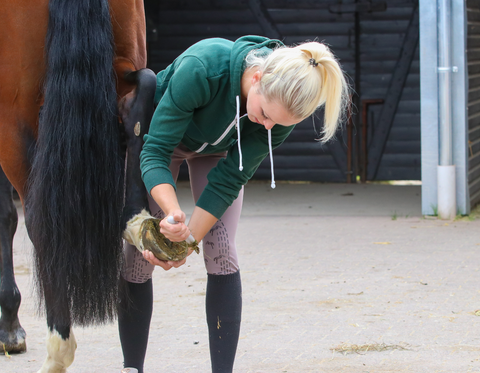It’s every horse owner’s worst nightmare. The moment you watch your horse trot across the pasture or stumble across a change in terrain and think, “are they lame?” Not to mention the fan fair of diagnosis and treatments that usually ensue afterward.

Lameness should be taken seriously no matter how significant, and horses in moderate to intense work are athletes deserving of special accommodations. However, as a horse breeder, owner or rider, some steps can be taken to reduce the risk of your four-legged friend coming up lame.
Assess the Individual and Breed for Soundness
As with any human athlete, horses ought to be matched with a discipline that complements their build and talents. For example, a slower-footed, cold-blooded horse can put more strain on their bodies trying to complete a fast-paced barrel pattern, and a fine-boned Arabian can struggle pulling heavy carriages. Of course, these two examples are extreme, but taking note of a horses’ build even within a breed and considering their conformational strengths and weaknesses will set them up for success.
As a breeder, studying the legs, hooves, and overall balance of breeding stock is vital. Over the last century, horses have become recreational and are bred with performance in mind. Because of that, veterinarians see horses bred so intensely for traits like cow sense, lightning speed, and graceful movements that breeding for workhorse-like structures has been left behind. The old adage “form to function” has been tossed aside in many mainstream events, and the specialist athletes are finding themselves with weaker hooves to support them.
Picking a discipline that suits the individual and breeding for longevity is a cause the entire equine industry should get behind. Still, there are practical things equestrians can do to increase comfort for their partner, regardless of build and discipline.
Care for the Base
Solid hooves at the right angle give your horse the best chance at lifetime comfort. Finding a farrier that understands your horses’ workload (Rocky trail rider? Casual lesson horse?) can help them decide on footwear, trim frequency, hoof supplements, and topical hoof dressings. Caretakers should also be prepared to check hooves once a day for rocks, thorns, or cracks that make have materialized.
Improve the Environment
For many, picking rocks out of arena dirt probably feels like a rite of passage. Although the task is mundane, the plain truth is that improving the ground our athletes perform on is essential to their health. Whether it’s fewer rocks in the arena or a cushier arena dirt mixture that holds their weight, horses deserve to feel their best while performing for us.
Similarly, horses can experience discomfort from training on too-hard surfaces, like a packed-down arena or an arena with little-to-no top layer of footing. Training on these surfaces can exacerbate issues that were previously unseen, as well as create new soreness.
In the Saddle
Once in the saddle, riders can take several steps to ensure their partners stay comfortable. Polo wraps, sports medicine boots, and brushing boots are just a few options in the leg protection realm, and riders should consider the workload and horses’ medical history when it comes to choosing leg protection.
Saddle fitting is arguably the most critical step – on par with hoof health. Getting a saddle fitted on a wonky horse is infuriating, but the results of a well-fitted saddle are well worth the heartache and thousands of dollars spent. When in doubt, enlist a professional saddle fitter to make sure your ride fits the horse the best it can.
Warming up and cooling down your partner is probably the least-romantic riding activity – but oh-so-essential. Nearly every rider is guilty of not warming their horse up enough or cooling them out completely at least once in their lives. This practice is essential because it gives riders’ a chance to feel out their horse, see if there is a lame step in there and mitigate strains from cold muscles. Then, at the end of a ride, a rider can gauge the fitness level and check again for a sore step.
Lameness in horses is an intense problem, but when steps are taken to prevent lameness, a problem can be detected sooner and hopefully resolved as simply as possible.






















